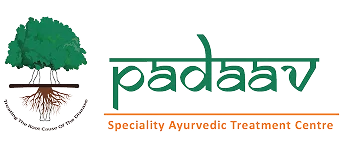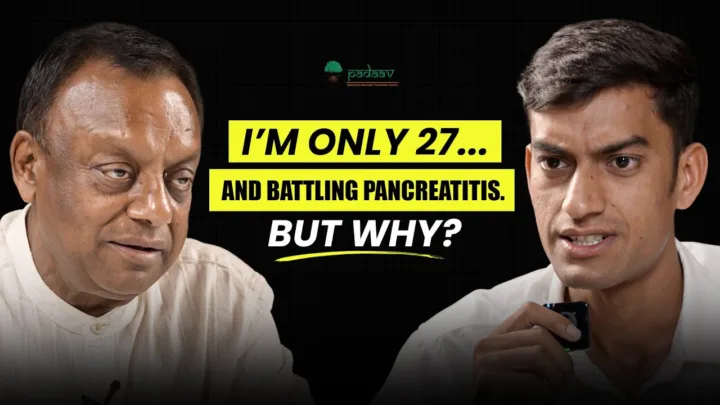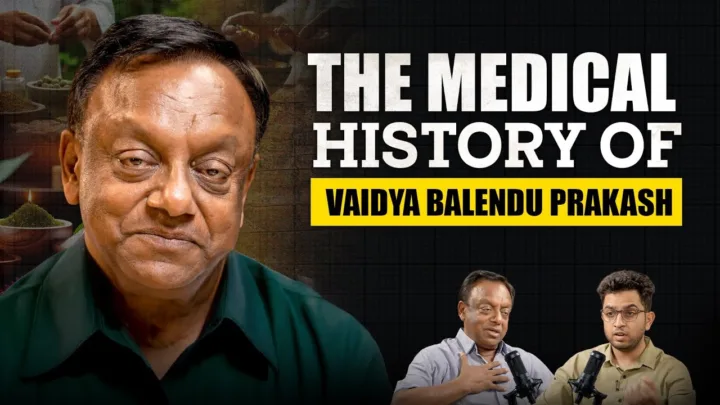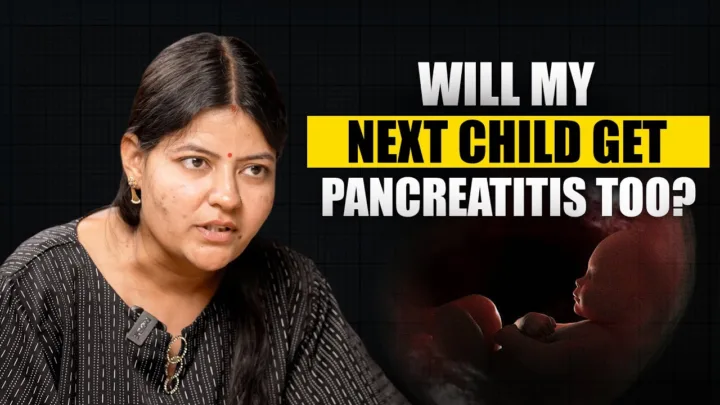Pancreatitis, an inflammation of the pancreas, is a condition that manifests differently in individuals, yet consistently presents a challenging battle marked by severe pain, debilitating physical decline, and a complex path towards recovery. While often primarily associated with alcohol consumption, patient experiences reveal a broader spectrum of causes and a healthcare landscape that, at times, struggles to provide comprehensive, long-term solutions. This article delves into the personal accounts of three patients with varying forms of pancreatitis, shared during an interaction at Padaav, a center noted for its distinct approach. Their stories illuminate the profound impact of the disease, the search for effective treatment beyond conventional pain management, and the critical need for greater awareness and support for those affected.
We profile Harsh Gupta, Himmat Tejani, and Sanjay Kumar Luhar, each grappling with pancreatitis, but with distinct case presentations, offering a window into the diverse realities of living with this illness.
Harsh Gupta, a 25-year-old male residing in Noida, is a non-alcoholic and non-tobacco smoker who was diagnosed with Recurring Acute Pancreatitis. He reports having experienced a total of 5 attacks. He struggle spanned 7-8 years, with intense episodes that led to multiple hospitalizations. A significant aspect of his early experience was the medical fraternity’s persistent assumption that alcohol was the root cause, despite his denial and non-smoking status. His diagnosis evolved from Acute to Recurring Acute and eventually touched upon Necrotizing and Chronic classifications. At his lowest point, his weight plummeted to 48-49 kgs. He came to realize that his lifestyle – marked by late nights and inconsistent eating habits – was likely a major trigger for his attacks, rather than the alcohol doctors suspected. Following treatment at Padaav, which emphasized structured living, including ensuring 8 hours of sleep, his health dramatically improved. He has regained significant weight, now stable at 74-75 kgs, and has overcome the profound fear of travel and illness that previously limited his life. He now leads a full, active life, pursuing his career and hobbies.
Himmat Tejani, a 47-year-old male from Surat, Gujarat, is another patient who is non-alcoholic and a non-smoker. He was diagnosed with Chronic Calcific Pancreatitis with zero attacks. His initial presentation was unusual, marked primarily by continuous, unexplained weight loss beginning in early 2024, initially attributed to diabetes. Despite controlling his diabetes, the weight loss persisted, leading to extensive investigations. Pancreatitis was diagnosed in August 2024, notably without the severe pain typical of acute attacks. Conventional medical advice recommended lifelong dependence on pancreatic enzyme supplements (Creon 25000), a prospect he found unacceptable. This prompted an extensive search for alternative therapies, including various Ayurvedic approaches. While initially skeptical of different medical claims, his trust in Padaav grew through patient testimonials and their specialized focus on pancreatitis. He had negative experiences with other Ayurvedic treatments, like Virechana, which caused severe weakness and exacerbated his symptoms, requiring emergency allopathic pain management. His weight dropped drastically from 128 kg to a low in the 60s. He highlights the importance of an “impact base” – observing real patient recoveries – over purely “research-based” evidence when conventional medicine offers no cure. He is now undergoing treatment at Padaav, finding the environment supportive and the integrated approach (combining Ayurvedic principles with attention to modern diagnostic reports) reassuring.
Sanjay Kumar Luhar, a 37-year-old male from Mahesana, Gujarat, is a patient whose case history includes being an alcoholic and a non-tobacco smoker. He was diagnosed with Acute Necrotizing Pancreatitis and reports a total of 11 attacks. His first documented attack, as he recounts, occurred in October 2024 while in Canada. His experience underscores the extreme severity of pain associated with pancreatitis, which he describes as so unbearable it brought him to tears. This pain led to significant weight loss, dropping from 93 kg to 65 kg, and inducing a deep-seated fear of eating or drinking. Conventional treatment in both Canada and India focused primarily on pain management through potent analgesics like hydromorphone and fentanyl patches, along with strict dietary restrictions (often involving intravenous fluids). The prognosis offered – lifelong pain management, potential organ removal if necrosis worsened, and dependency on liquid diets – was unacceptable to Sanjay, particularly as a father of a newborn. Like Himmat, Sanjay’s decision to seek treatment at Padaav was driven by the strong positive feedback from former patients who had achieved recovery. He is currently on his 20th day of the 21-day treatment and feels significantly better, expressing disbelief that he ever had such a severe illness.
These compelling patient narratives underscore several critical facets of pancreatitis awareness:
-
Varied Presentations and Causes: Pancreatitis is not monolithic. It can manifest as acute, recurring acute, necrotizing, or chronic calcific forms, and while alcohol is a risk factor (as noted in Sanjay’s case history), it is by no means the only one, with idiopathic cases and lifestyle playing significant roles (as seen with Harsh and Himmat). Overemphasizing alcohol can lead to misdiagnosis and delay appropriate treatment for others.
-
The Debilitating Reality: Beyond the widely known symptom of pain, pancreatitis severely impacts patients’ physical health, leading to drastic weight loss, malnutrition, and a constant fear related to food intake. It takes a significant physical and mental toll.
-
Challenges in Conventional Care: For many, especially those with recurrent or chronic forms, conventional medicine often focuses on symptom management rather than a cure, leading to perceived lifelong dependency on medication, fear of surgery, and a significant reduction in quality of life. The cumulative financial burden can also be immense, as one attendant shared, reaching upwards of 30 lakhs over several years due to repeated hospitalizations for attacks and surgeries.
-
The Quest for Curative Treatment: Patients actively seek alternatives when conventional options fall short of providing a path to true recovery and a return to normalcy.
-
The Power of Patient Experiences: Testimonials and direct interaction with recovered individuals are invaluable sources of hope and trust for prospective patients navigating the complex and often disheartening landscape of pancreatitis treatment options.
-
Alternative and Integrated Approaches: Centers like Padaav, as described by these patients and their attendants, offer a model that integrates traditional knowledge (Ayurveda) with modern diagnostics (using reports), focuses on lifestyle correction, personalized care, and aims for fundamental healing rather than just symptom suppression. The detailed process of their medicine preparation, taking years and involving specific alchemical processes (using substances like mercury, sulfur, and copper), as shared by an attendant based on witnessing the process, highlights a commitment to their specific therapeutic approach. The supportive environment, tailored diets based on individual symptoms (like diabetes or stage of pancreatitis), and constant monitoring by staff and doctors further contribute to the patient’s sense of being cared for holistically.
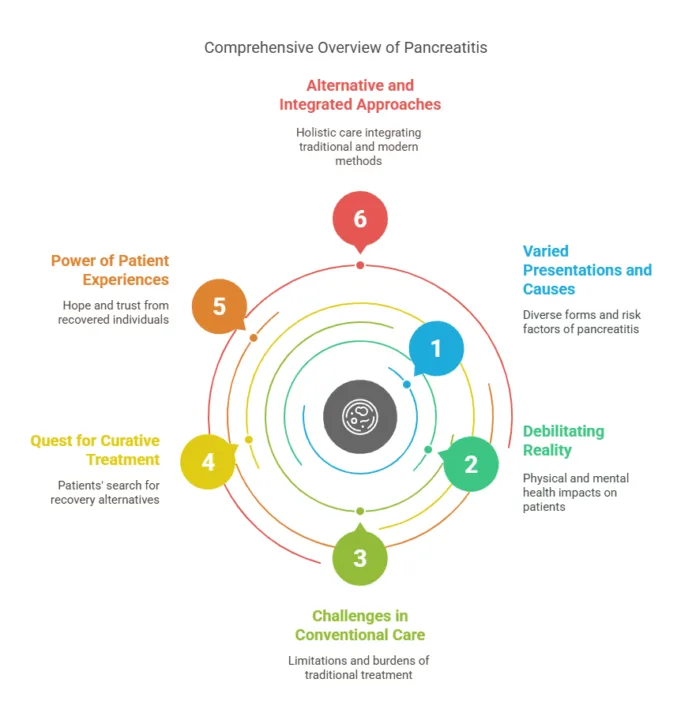
The journeys of Harsh, Himmat, and Sanjay vividly illustrate the severe impact of pancreatitis and the pressing need for greater public and medical awareness regarding its varied causes, symptoms, and the limitations of current standard treatments. Their stories, culminating in finding hope and improvement through an alternative approach at Padaav, emphasize that continued exploration and validation of diverse therapeutic strategies are essential to offer better outcomes and restore quality of life for all those battling this challenging disease.
